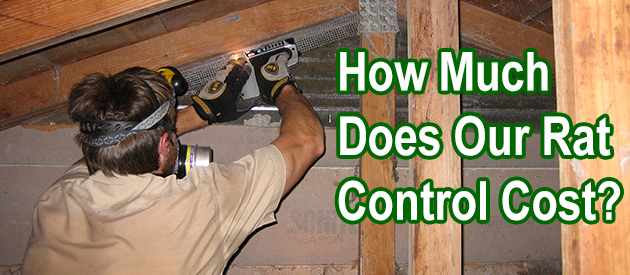Clark County, Las Vegas Rat Control Situation:
Hi David, I came across your informative site and was hoping you might be able to shed some advice on a situation. I have one single solitary mouse which I've had in my house for months! This thing will not go for any baited mouse trap, from a snap trap to a RatZapper. I've tried varieties of peanut butter for bait, bacon and anything else I found suggested online. This little SOB has eaten drywall and has gnawed clothes and so far I have been unsuccessful in capturing or killing the varmint. It won't eat the warfarin (blue) or the grain colored (beige) bait blocks. I've even tried the anti-freeze with no success. I really feel frosted and hate the idea of having to spend money on a professional to eliminate one lone mouse so I'm hoping you may be able to give me a suggestion I've overlooked. Thanks, Rob Lone mouse, huh? Have you tried sealing your house shut so that it can't get outside any more? Do that, and you'll have no problem catching it. House has been sealed for almost 5 months and checked AND CONFIRMED by two different contractors. I had even taken my house security camera system and set up the cameras in the house. One mouse and only one mouse. I guess it's something you can't help me with!
Las Vegas Rat Control Tip of The Week
How Can I Get A Rat Out Of My Car?
Clean Up Your Car:
When a rat no longer has access to the food inside your car it will no longer have a good place to nest, sleep, or find food. Rats always nest close by to where their food source is and if you have a large amount of garbage in your car or items that can be fed upon, they're much more likely to stick around.
Trim Back Foliage From Your Car:
When you notice branches that overhang your car it's possible that you can have problems with a number of uninvited guests. Trimming back the items around your car can be a crucial way that you can prevent pests like rats from having a direct line to get into the vehicle.
Close Up Your Car:
Make sure that you are closing up your car. If you have a window that is open, a sunroof that opens, or a door that doesn't quite close, a rat can make their way in quite quickly and easily. A rat only needs around half an inch to get into a space and even though it may not seem like there is that much room, a rat can make it into the area easily.
Remove Moisture And Damp Clothing From Your Vehicle:
If you have paper, damp clothing, or other items across your vehicle, they need to be removed quickly. Damp clothing can be an ongoing problem when it comes to attracting rats and keeping them in your car.
Set Down Some Traps:
A quick set trap that you place in your car in the evening or a metal pedal trap can be a great way to manage a rat problem in your car. Making sure that you can trap the rat in your vehicle can be crucial to building a better method of keeping rats out of your vehicle.


